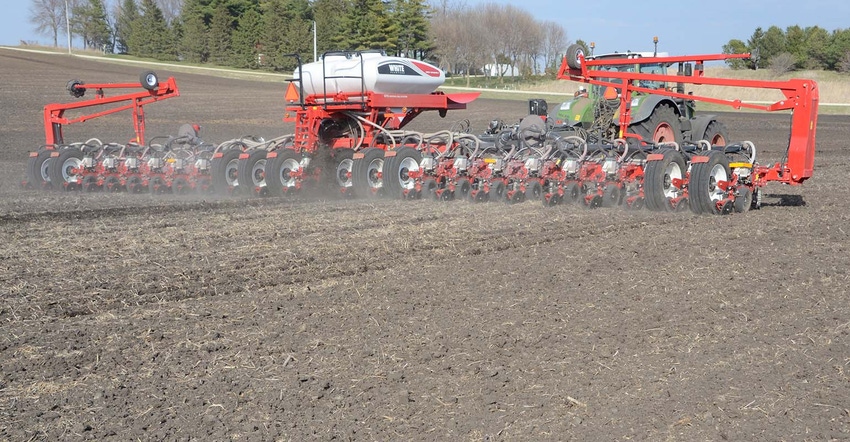
Rains across the Midwest in recent days slowed planting progress, but corn and soybeans still found some positive momentum for the week ending May 17, per the latest crop progress report from USDA. Both crops are going in the ground moderately faster than the prior five-year average and are a vast improvement from 2019’s waterlogged pace, which was historically slow.
Corn planting progress reached 80% this past week, up from 67% a week ago. Analysts were close to the mark, with an average trade guess of 81%. Progress is almost double that of a year ago, when just 44% of the crop had been planted by now. It’s also moderately ahead of the prior five-year average of 71%.
Southern states had the early planting advantage, but several Midwestern states have rocketed ahead in recent weeks to erase that lead. That includes several states that are nearly wrapped up, including Iowa (96%), Minnesota (95%) and Nebraska (91%). Pennsylvania (15%) and North Dakota (20%) continue to be the anomalies on the lower end of planting progress.
Forty-three percent of this year’s corn crop is now emerged, versus 16% a year ago and the prior five-year average of 40%. It also nearly doubled the prior week’s count of 24%. North Carolina (87%) and Texas (81%) continue to lead the way for now among the top 18 production states.
Soybean planting progress also saw solid forward momentum this past week, moving past the halfway mark to 53%. Analysts were expecting an even bigger jump, with an average trade guess of 56%. But USDA’s estimate is still well ahead of last year’s pace of 16% and the prior five-year average of 38%.
North Dakota is the only state among the top 18 production states that is still reporting single-digit planting progress, with 9%. On the upper end of the spectrum is Iowa, with 86% of the crop now in the ground. Nebraska is not far behind, with 78% planted.
Soybean emergence reached 18% last week, up from 7% the prior week. That pace is also ahead last year’s mark of 4% and the prior five-year average of 12%. Louisiana (55%) and Mississippi (41%) lead the way so far.
Spring wheat planting is now 60% complete, up from 42% a week ago and in line with analyst expectations. It’s still slightly behind 2019’s pace of 63% and moderately below the prior five-year average of 80% -- due primarily to Minnesota and North Dakota getting off to a slower-than-normal start. And 30% of the crop is emerged, which is still behind the five-year average of 46%.
For winter wheat, 56% of the 2019/20 crop is now headed, up from 44% a week ago. It’s ahead of 2019’s pace of 51% but below the prior five-year average of 62%. Four of the top 18 production states have only made single-digit progress so far, including Michigan, Montana, Nebraska and South Dakota.
USDA also docked quality conditions another point, with 52% of the crop now rated in good-to-excellent condition. Another 32% is rated fair (up a point from last week), with the remaining 16% rated poor or very poor (unchanged from last week). Analysts thought USDA would hold quality ratings steady.
Click here to read the latest USDA crop progress report in its entirety.
About the Author(s)
You May Also Like






